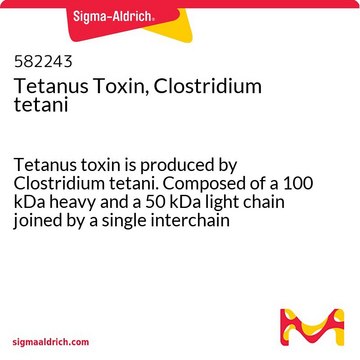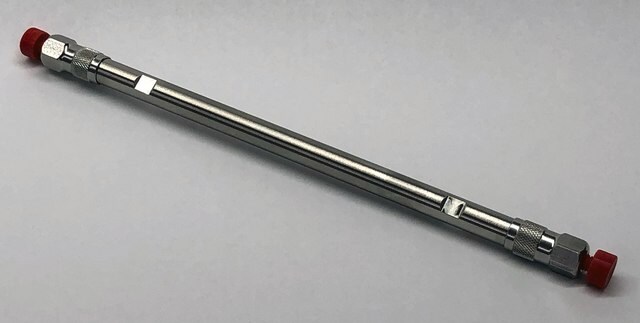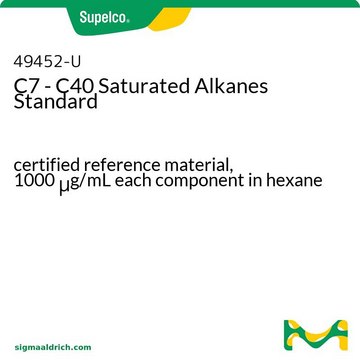SML1153
Clostridium difficile Toxin B
≥95% (SDS-PAGE), lyophilized powder, cellular toxin
Sinônimo(s):
C. difficile Toxin B, Clostridium Toxin B
About This Item
Produtos recomendados
product name
Clostridium difficile Toxin B, ≥95% (SDS-PAGE)
Nível de qualidade
Ensaio
≥95% (SDS-PAGE)
forma
lyophilized powder
temperatura de armazenamento
2-8°C
Procurando produtos similares? Visita Guia de comparação de produtos
Descrição geral
Ações bioquímicas/fisiológicas
Clostridium difficile is a bacteria that causes antibiotic-associated pseudomembranous colitis. This bacterium produces two high molecular weight exotoxins, toxin A and B. Toxin B is more effective than toxin A in disrupting human colonic epithelium in vitro.
Características e benefícios
Reconstituição
Contents of the 2 μg SKU when reconstituted in 100 μL sterile distilled water will contain Toxin B at a concentration of approximately 0.02 mg/mL in 0.05 M Hepes, 0.15 M sodium chloride and 5% sucrose.
Outras notas
Mixing: Swirl or pipette gently to mix. Vortexing may promote aggregation.
Palavra indicadora
Danger
Frases de perigo
Declarações de precaução
Classificações de perigo
Acute Tox. 3 Oral - Acute Tox. 4 Dermal - Acute Tox. 4 Inhalation
Código de classe de armazenamento
6.1A - Combustible acute toxic Cat. 1 and 2 / very toxic hazardous materials
Classe de risco de água (WGK)
WGK 2
Certificados de análise (COA)
Busque Certificados de análise (COA) digitando o Número do Lote do produto. Os números de lote e remessa podem ser encontrados no rótulo de um produto após a palavra “Lot” ou “Batch”.
Já possui este produto?
Encontre a documentação dos produtos que você adquiriu recentemente na biblioteca de documentos.
Nossa equipe de cientistas tem experiência em todas as áreas de pesquisa, incluindo Life Sciences, ciência de materiais, síntese química, cromatografia, química analítica e muitas outras.
Entre em contato com a assistência técnica








